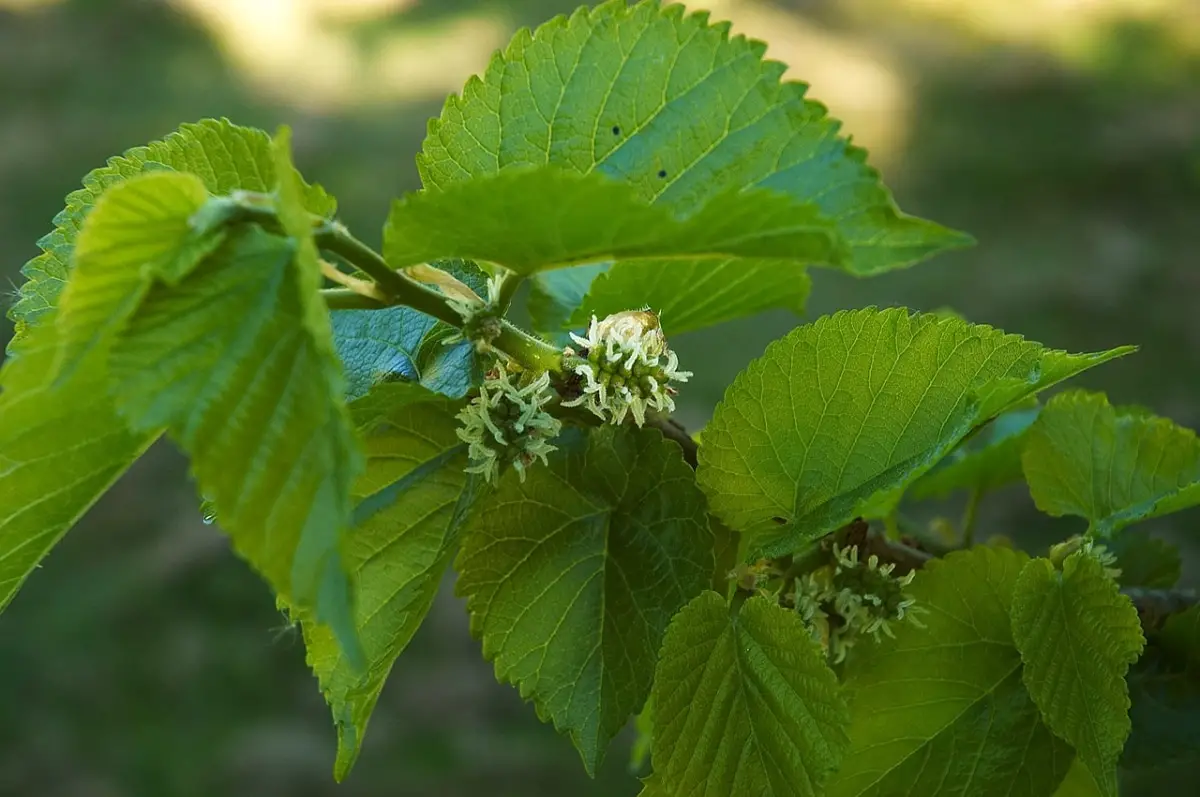






Did you know that there are many types of mulberry trees? It is not known exactly how many, but it is estimated that there are at least a fortnight. All of them are characterized by being deciduous trees, which lose their foliage as soon as temperatures begin to drop during the fall.
There are some varieties that are widely grown in the temperate regions of Europe, and they are the white mulberry and the black mulberry. There is even a cultivar that does not produce fruits, and that receives the English name of “fruitless” (mulberry without fruit).
Mulberry trees are trees that they do not usually grow very fast, but not excessively slow either. In fact, the normal thing is that they do it at a rate of about 20-30 centimeters per year, as long as the conditions in which they live are the most appropriate, and they are not going through a bad time as a result of, for example, fungal or pest infection.
They withstand both cold and heat very well, but without reaching extremes. Let me explain: being native to the temperate regions of Asia, North America and Africa, the higher or lower the temperature, the more likely it is that they will suffer damage. In fact, to make them feel really comfortable, it is advisable that temperatures remain between -20ºC and 40ºC.
But yes: keep in mind that they are sensitive to late frostsand that they have a hard time during heat waves in which temperatures remain between 40ºC and 25ºC.
And with that said, let’s see what are the types of mulberry trees that we can find more easily in nurseries:
White mulberry
Image – Wikimedia Commons/Amygdalarum
The species White mulberry It is known by the name of white mulberry. It is a tree native to central and eastern Asia. It can measure up to 15 meters in height, and develops petiolate leaves about 5 centimeters wide and more or less long. The fruits are white -hence its surname-, and measure about 2,5 centimeters long. These mature in mid to late spring.
As a curiosity, say that the leaves of this plant serve as food for silkworms. What’s more, these animals only eat that.
Morus alba was Fruitless
The fruitless white mulberry is a variety of White mulberry. It differs from the pure species by not producing fruits.. But otherwise, it’s the same. It reaches 15 meters in height, and develops a wide crown of about 4 to 5 meters.
White Mulberry ‘Pendula’
Image – Wikimedia/Aimaina hikari
The White mulberry ‘Pendula’, called pendula mulberry or weeping mulberry, is a cultivar of White mulberry whose branches hanggiving the plant a “weeping” appearance. In fact, if you have ever seen images, you may have remembered a tree that has the same size: the weeping willow, whose scientific name is Babylonian willow. But unlike this one, the mulberry tree does not need as much water, and it is more resistant to pests.
Morus mesozygia
Image – zimbabweflora.co.zw
The Morus mesozygia It is a mulberry native to tropical Africa, specifically, it grows in the forests of both the west and the center of the continent. It reaches a height of 15 meters, although it can reach 20 meters. Its crown is wide, about 5 meters in diameter. Produces red fruitwhich are consumed by different species of monkeys as well as chimpanzees.
Morus microphylla
The species Morus microphylla It is a tree native to the United States. It can reach a height of 20 meters, and as its surname indicates, it has small leaves, about 4-5 centimeters long.so it is the mulberry tree that has the smallest foliage. This is so because it grows at high altitudes, between 900 and 1500 meters above sea level, where winters are very cold and summers mild.
black mulberry
Image – Wikimedia/DS28
The black mulberrywhich we call black mulberry or black moral, is a tree native to Southwest Asia that usually grows somewhat smaller than the white mulberry, since it is rare that it exceeds 13 meters in height. The leaves measure up to ten centimeters in length, and are green, like all those of the Morus genus. Its fruits are red drupes.
Red elm
Image – Wikipedia, the free encyclopedia
The Red elm is the red mulberry. It is native to North America, specifically from the east of the continent. It reaches a height of 10 to 15 meters, and develops green leaves up to 14 centimeters long by 12 centimeters wide. Its fruits are drupes about 3 centimeters long, which start out red and end up being dark purple.. It is very similar to the black mulberry, but its origin is different.
Do you know other types of mulberries? These trees are very interesting garden plants that do not require much care. For this reason, we hope that you will be encouraged to plant one on your land, since we are sure that you will enjoy it a lot.

